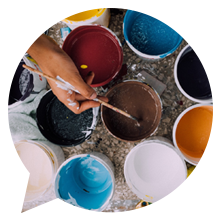
Lead in paint on children's playgrounds
Introduction
A study in America by the Consumer Product Safety Commission suggests that lead used in paint on playground equipment may present a serious poisoning hazard for children under six years-old.
Similar results on small scale tests have been noted in the UK where this problem was identified some years ago. Advice from the Department of the Environment at the time has been incorporated in these notes.
The CPSC study concludes that the problem arises principally with older paint where it has deteriorated and flaked due to weather conditions, age and usage. Equipment which is coated with paint containing lead does not present a hazard if it is maintained in good condition. It should be noted that most modern metal playground equipment is coated with non-lead paint and its deterioration does not present a health problem (although for durability reasons surface finishes should always be maintained).
Checking equipment
Visual assessment
Paint produced before 1980 is likely to contain a high lead content. Any later surface treatments should be checked for wear as they may expose the original coating.
- Assess the level of paint chips and dust, including any at ground level
- Assess any repairs which might be required which would affect the condition of the paint.
Evaluate the risk
Paint, even that containing lead, is not believed to be hazardous providing it is in good condition and no action by the operator is necessary other than continual monitoring.
If the following defects are noted action will be required:
- peeling
- cracking
- chipping
While testing of the paint samples is possible under laboratory conditions, this can be expensive and it may be more economic to assume lead is present, especially in older equipment and undertake remedial action. It should be noted that red, orange, yellow, green and brown are the colours most likely to contain lead.
NB. The CPSC study suggests that portable lead testing kits may not be sufficiently accurate or practical in use on playground equipment to be helpful.
If laboratory testing is carried out the levels should not exceed 0.5%
Remedial measures
Temporary control
If the paint is in good condition, continue to monitor the equipment for any deterioration.
If the paint is in poor condition or is known to have a high lead content, stabilise the existing surface and cover the paint using a non-lead paint and monitor.
Permanent control
Replace the equipment
This is only feasible where the age is such that the equipment would have to be replaced within a short period.
Strip and re-paint the surface. This is a specialist job because of the health hazards which can be presented to the worker stripping the old paint. The possibility of hazards to children using the site at the time should also be noted. This should be pointed out to sub-contractors.
Re-painting the equipment
BS 5696 recommended that any paint used should be lead free or contain less than 0.25% in the dry lead film and this should be checked with the supplier of the paint. EN1176 recommends a suitable paint.
